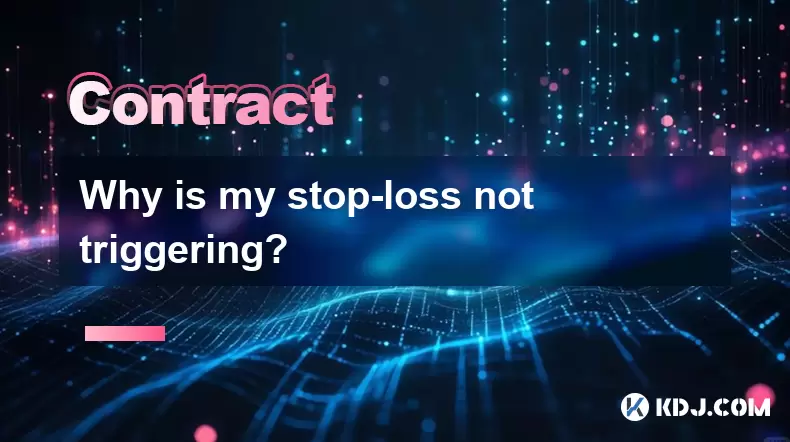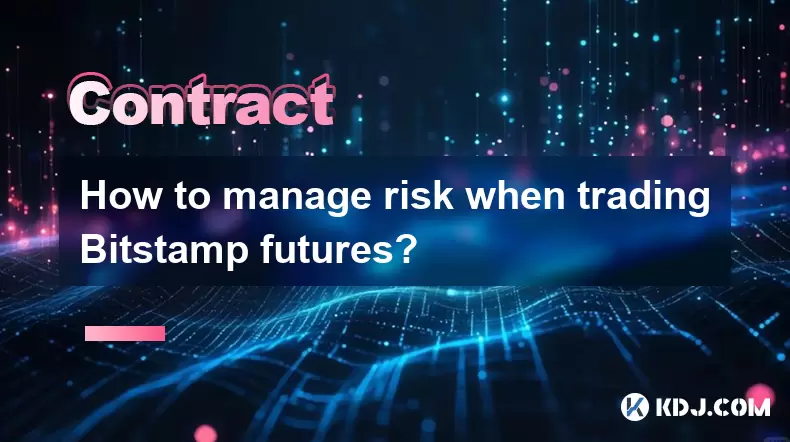-
 Bitcoin
Bitcoin $118500
0.73% -
 Ethereum
Ethereum $3678
2.80% -
 XRP
XRP $3.176
-2.52% -
 Tether USDt
Tether USDt $1.001
0.06% -
 BNB
BNB $772.0
0.24% -
 Solana
Solana $185.3
-2.48% -
 USDC
USDC $1.000
0.05% -
 Dogecoin
Dogecoin $0.2347
-3.96% -
 TRON
TRON $0.3121
0.42% -
 Cardano
Cardano $0.8086
-1.40% -
 Hyperliquid
Hyperliquid $42.13
-1.90% -
 Stellar
Stellar $0.4302
-0.53% -
 Sui
Sui $3.762
0.58% -
 Chainlink
Chainlink $18.14
0.07% -
 Bitcoin Cash
Bitcoin Cash $515.4
1.00% -
 Hedera
Hedera $0.2406
-3.45% -
 Avalanche
Avalanche $23.78
-0.52% -
 Litecoin
Litecoin $111.5
-1.76% -
 UNUS SED LEO
UNUS SED LEO $8.993
0.32% -
 Shiba Inu
Shiba Inu $0.00001362
-2.96% -
 Toncoin
Toncoin $3.149
-0.45% -
 Ethena USDe
Ethena USDe $1.001
0.02% -
 Polkadot
Polkadot $3.997
-4.42% -
 Uniswap
Uniswap $10.07
0.21% -
 Monero
Monero $323.5
0.78% -
 Bitget Token
Bitget Token $4.616
-0.73% -
 Dai
Dai $1.000
0.02% -
 Pepe
Pepe $0.00001254
-3.50% -
 Aave
Aave $286.6
-1.14% -
 Cronos
Cronos $0.1257
4.45%
Why is my stop-loss not triggering?
A stop-loss order in crypto trading automatically sells your asset when the price hits a set level, but it may not execute as expected due to price gaps, slippage, or incorrect order types like stop-limit in volatile markets.
Jul 23, 2025 at 01:49 am

Understanding Stop-Loss Mechanics in Crypto Trading
A stop-loss order is a risk management tool used to limit losses by automatically selling a cryptocurrency when its price drops to a predetermined level. In the crypto market, where prices can swing dramatically in minutes, setting a stop-loss is essential. However, many traders report that their stop-loss fails to execute when expected. This issue often stems from a misunderstanding of how stop-loss orders function on different platforms. A stop-loss only triggers when the market price reaches or falls below the specified level, not when the order is placed. If the price doesn’t reach that point, the order remains inactive.
Different Types of Stop-Loss Orders
Not all stop-loss orders behave the same way. Exchanges typically offer several types:
- Stop-market order: Converts to a market order once the stop price is hit, executing immediately at the best available price.
- Stop-limit order: Becomes a limit order when the stop price is reached, but only executes at the specified limit price or better.
- Trailing stop-loss: Adjusts automatically as the price moves favorably, maintaining a set distance from the highest price reached.
Misconfiguring the type of stop-loss can lead to non-execution. For example, a stop-limit order may not trigger if the price gaps below the limit price during a flash crash — common in crypto. Traders must select the appropriate type based on volatility and liquidity.
Price Gaps and Slippage in Cryptocurrency Markets
Crypto markets operate 24/7 with high volatility, especially for low-cap tokens. During sudden price drops, the market can "gap" — meaning the price jumps from one level to another without trading at intermediate values. If your stop-loss is set at $10 but the price drops from $10.50 to $8.50 instantly, **your stop-market order will execute at $8.50 or worse**, not $10. This slippage may feel like the stop-loss didn’t trigger, but it did — just at an unexpected price. Always check the order execution details in your trade history to confirm whether the stop was activated.Exchange-Specific Implementation and Delays
Each crypto exchange implements stop-loss logic differently. Some use internal order books, while others route orders externally. Key issues include: - Server latency: If the exchange’s system is slow or overloaded, orders may not process in real time.
- Order placement errors: Typos in the stop price or amount can cause the order to be invalid or ignored.
- Lack of native support: Some platforms (especially decentralized exchanges) do not support traditional stop-loss orders at all.
To verify your setup:
- Review the order confirmation screen carefully before submitting.
- Test with small amounts first.
- Check the exchange’s documentation for stop-loss limitations — for example, Binance requires a minimum distance from the current price for stop-limit orders.
How to Properly Set a Stop-Loss on a Centralized Exchange
Follow these steps to ensure your stop-loss triggers as intended: - Navigate to the trading pair (e.g., BTC/USDT).
- Select “Stop-Loss” or “Stop-Limit” from the order type dropdown.
- Enter the exact stop price where you want the order to activate.
- For stop-limit, set a limit price slightly below the stop price to increase execution chances (e.g., stop at $10, limit at $9.80).
- Double-check the quantity and confirm the order.
- Monitor the “Open Orders” tab to ensure the stop-loss appears as active.
If the order disappears without execution during a price drop, it likely failed due to a gap or limit mismatch — not a platform error.
Common Misconceptions About Stop-Loss Orders
Many traders assume stop-loss orders are foolproof. This is incorrect. A stop-loss does not guarantee execution at the exact price — especially in fast-moving markets. Another misconception is that stop-losses prevent all losses. They reduce exposure but cannot eliminate risk entirely, particularly in scenarios like exchange outages or extreme volatility. Some traders also confuse stop-loss with take-profit orders, leading to incorrect placement. Always test your strategy in a demo environment before live trading.Frequently Asked Questions
Why does my stop-loss show as “inactive” even after the price dropped below my stop level?
This usually happens with stop-limit orders. If the price gapped below your limit price, the order couldn’t fill and became inactive. Always set your limit price lower than your stop price to allow for slippage.Can I set a stop-loss on a decentralized exchange like Uniswap?
Most DEXs do not support automatic stop-loss orders. You must manually monitor prices or use third-party tools like DeFi Saver or Instadapp, which integrate with smart contracts to simulate stop-loss behavior.Does a stop-loss work during weekends or holidays in crypto?
Yes, crypto markets never close. However, lower liquidity on weekends can increase slippage, making stop-market orders execute at worse prices than expected.What should I do if my stop-loss executed at a much worse price than set?
Check the order execution log in your account. If the price gapped, this is normal behavior. To reduce future slippage, consider using a stop-market order instead of stop-limit, or place the stop farther from the current price to avoid premature triggers.
Disclaimer:info@kdj.com
The information provided is not trading advice. kdj.com does not assume any responsibility for any investments made based on the information provided in this article. Cryptocurrencies are highly volatile and it is highly recommended that you invest with caution after thorough research!
If you believe that the content used on this website infringes your copyright, please contact us immediately (info@kdj.com) and we will delete it promptly.
- Frank Zappa's 'One Size Fits All' Gets a 50th Anniversary Box Set: Wowie Zowie!
- 2025-07-25 01:10:13
- Dangote, Paddy Supply, and Niger Foods: A Sweet Deal for Nigeria's Rice Bowl?
- 2025-07-25 00:50:12
- Golden Memories: United States Mint Celebrates 25th Anniversary with Sacagawea Gold Coin Sale
- 2025-07-25 01:15:12
- G Coin: Transactions Powering Global Adoption in Web3
- 2025-07-24 23:10:13
- Sleep Token, Turnstile, and the Rock Resurgence: Genre-Bending and Masked Mystique
- 2025-07-24 23:10:13
- DeepSeek AI's Crypto Predictions: Navigating Altcoin Season with XRP, DOGE, and ADA
- 2025-07-24 23:30:12
Related knowledge

Why is my Bitstamp futures position being liquidated?
Jul 23,2025 at 11:08am
Understanding Futures Liquidation on BitstampFutures trading on Bitstamp involves borrowing funds to open leveraged positions, which amplifies both po...

Does Bitstamp offer inverse contracts?
Jul 23,2025 at 01:28pm
Understanding Inverse Contracts in Cryptocurrency TradingIn the realm of cryptocurrency derivatives, inverse contracts are a specific type of futures ...

How to find your Bitstamp futures trade history?
Jul 23,2025 at 08:07am
Understanding Bitstamp and Futures Trading AvailabilityAs of the current state of Bitstamp’s service offerings, it is critical to clarify that Bitstam...

Can I use a trailing stop on Bitstamp futures?
Jul 23,2025 at 01:42pm
Understanding Trailing Stops in Cryptocurrency TradingA trailing stop is a dynamic type of stop-loss order that adjusts automatically as the price of ...

What are the trading hours for Bitstamp contracts?
Jul 24,2025 at 11:56am
Understanding Bitstamp and Contract Trading AvailabilityBitstamp is one of the longest-standing cryptocurrency exchanges, established in 2011 and head...

How to manage risk when trading Bitstamp futures?
Jul 24,2025 at 12:29pm
Understanding Bitstamp Futures and Their Risk ProfileTrading Bitstamp futures involves entering into contracts to buy or sell a specified amount of cr...

Why is my Bitstamp futures position being liquidated?
Jul 23,2025 at 11:08am
Understanding Futures Liquidation on BitstampFutures trading on Bitstamp involves borrowing funds to open leveraged positions, which amplifies both po...

Does Bitstamp offer inverse contracts?
Jul 23,2025 at 01:28pm
Understanding Inverse Contracts in Cryptocurrency TradingIn the realm of cryptocurrency derivatives, inverse contracts are a specific type of futures ...

How to find your Bitstamp futures trade history?
Jul 23,2025 at 08:07am
Understanding Bitstamp and Futures Trading AvailabilityAs of the current state of Bitstamp’s service offerings, it is critical to clarify that Bitstam...

Can I use a trailing stop on Bitstamp futures?
Jul 23,2025 at 01:42pm
Understanding Trailing Stops in Cryptocurrency TradingA trailing stop is a dynamic type of stop-loss order that adjusts automatically as the price of ...

What are the trading hours for Bitstamp contracts?
Jul 24,2025 at 11:56am
Understanding Bitstamp and Contract Trading AvailabilityBitstamp is one of the longest-standing cryptocurrency exchanges, established in 2011 and head...

How to manage risk when trading Bitstamp futures?
Jul 24,2025 at 12:29pm
Understanding Bitstamp Futures and Their Risk ProfileTrading Bitstamp futures involves entering into contracts to buy or sell a specified amount of cr...
See all articles

























































































